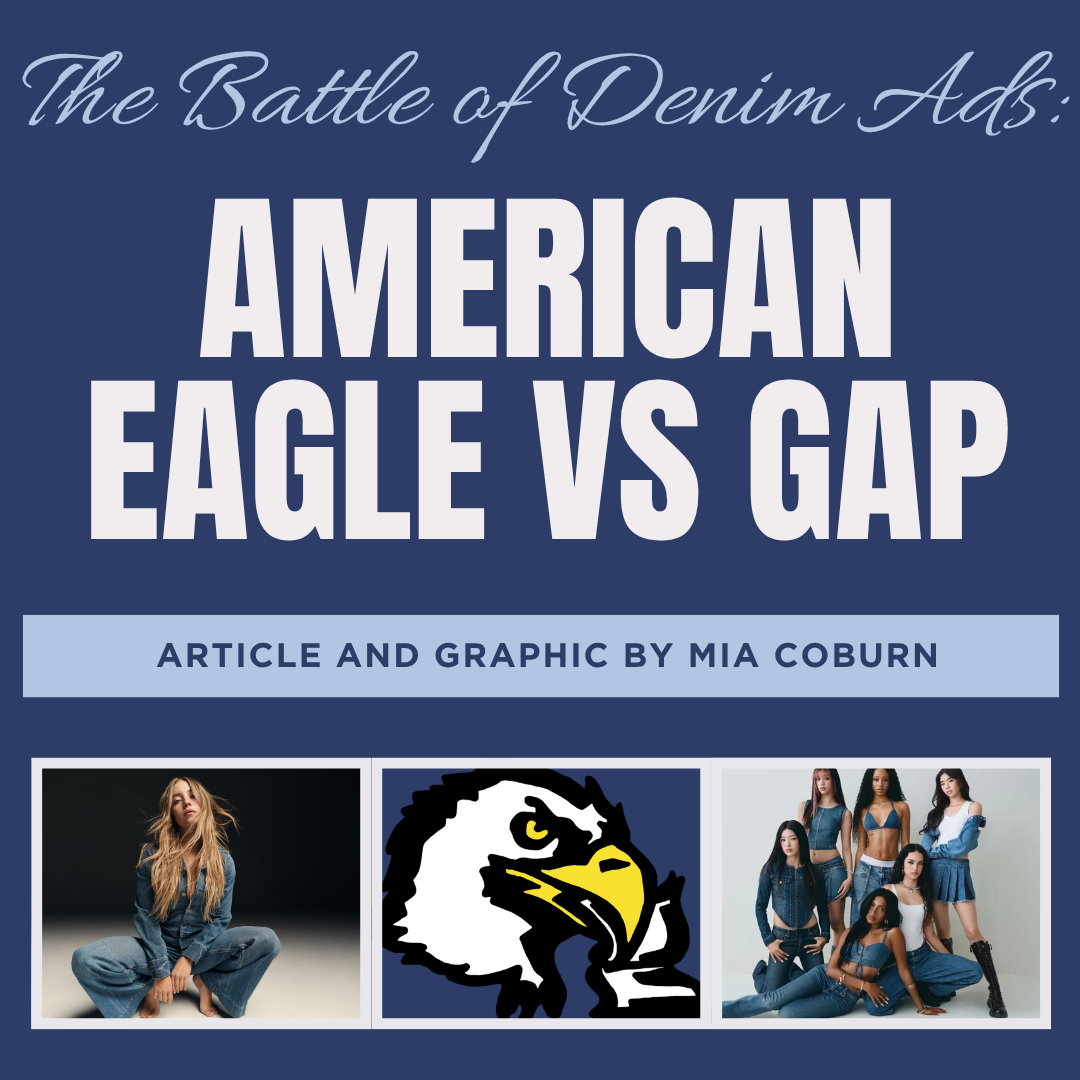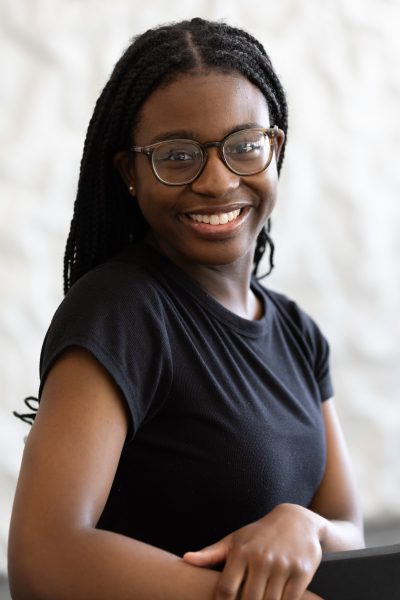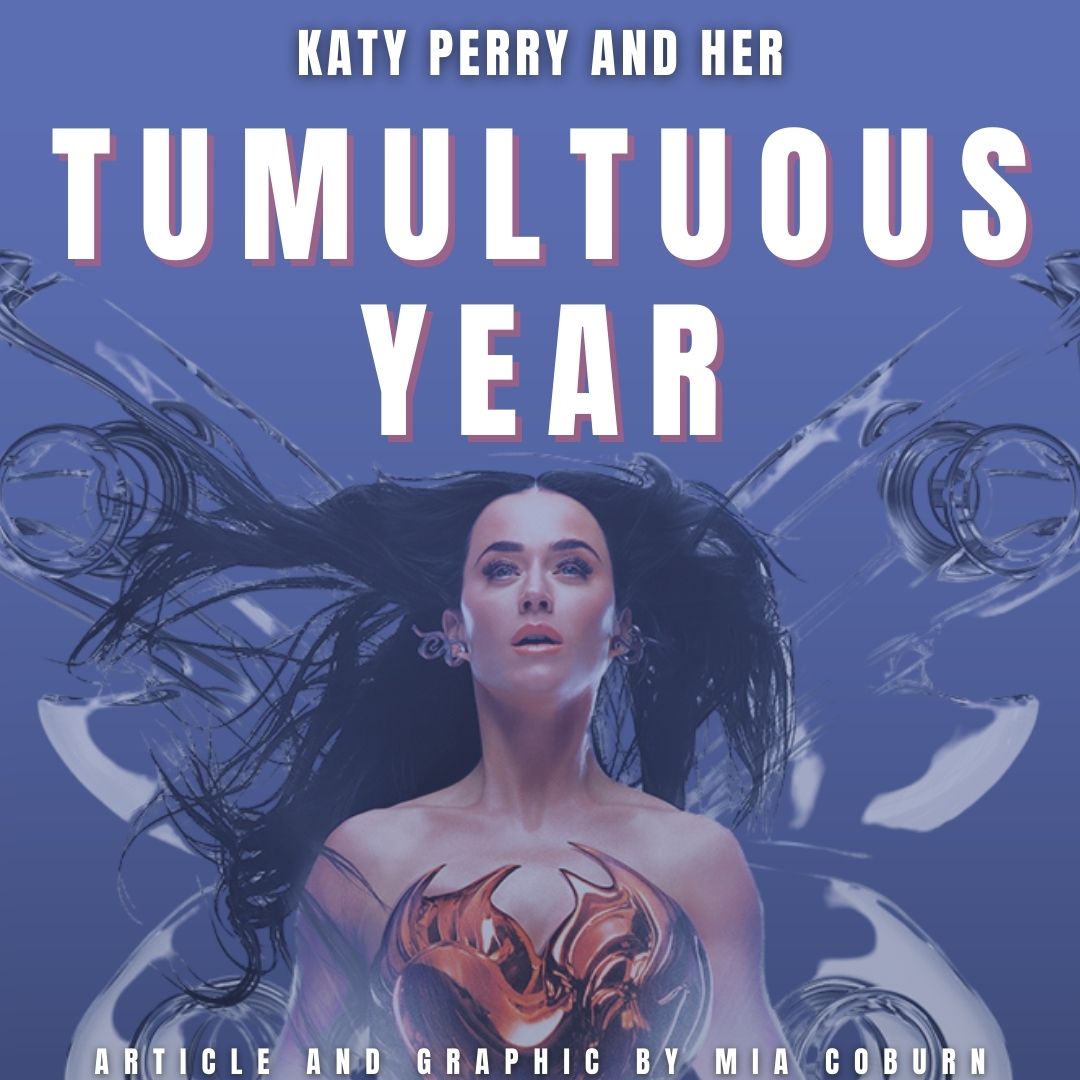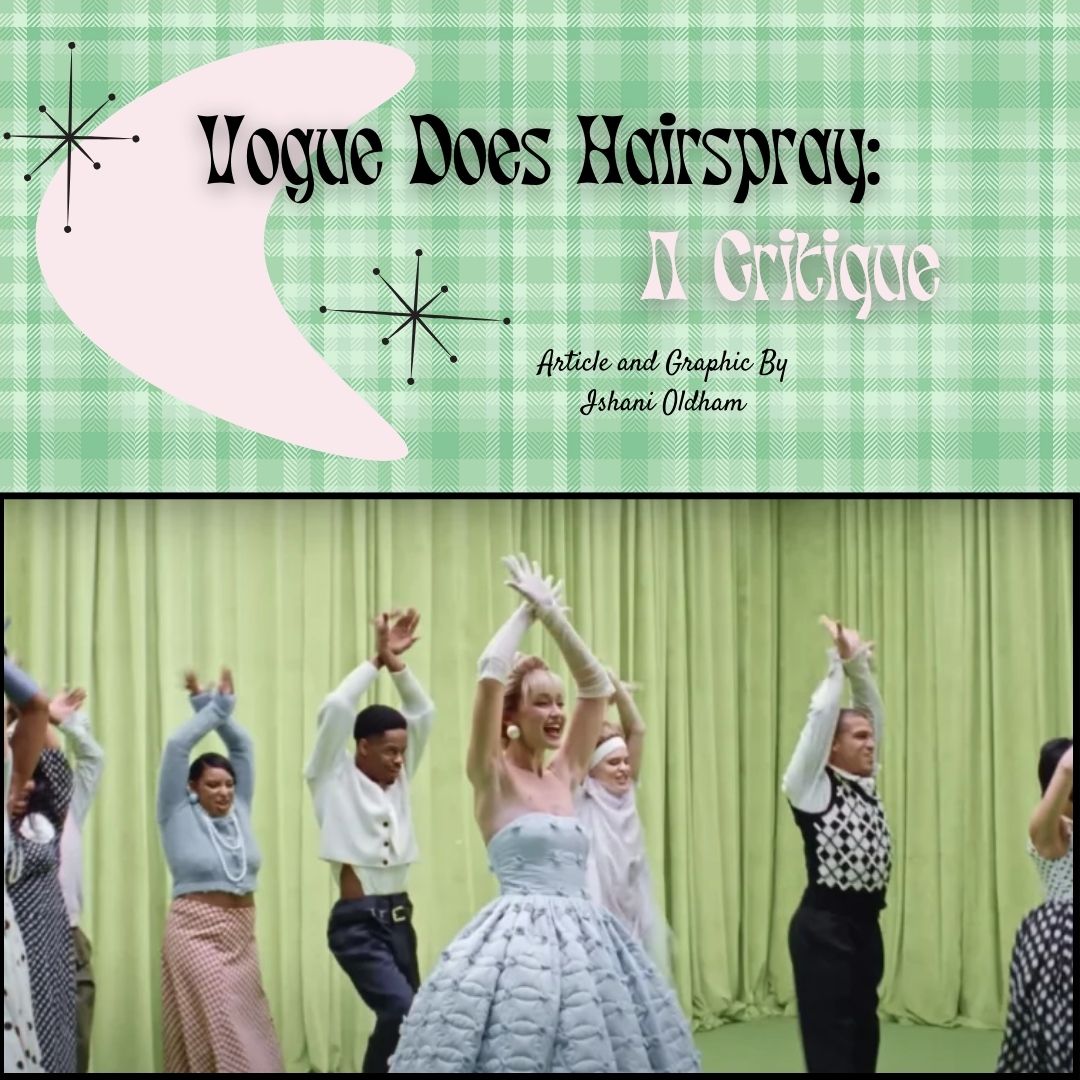This summer, one controversial product caught the attention of many amid the countless ads, campaigns, and partnerships. Jeans.
Jeans have been the backbone of fashion and comfort for years. Whether worn by the coal miners in the 1800s or the girl you sit next to in class, jeans are universal. Clothing companies are constantly marketing their products to consumers, but some do it more successfully than others.
American Eagle and Sydney Sweeney
Sydney Sweeney, best known for her roles in Euphoria and The White Lotus, has had her fair share of controversial ad runs and campaigns. Previously, her partnership with Dr. Squach sparked discussion because the bar of soap being promoted was infused with a small amount of her own bathwater. From the roles she plays and past commercials, her Dr. Squash partnership exacerbated the conversation surrounding Sweeney’s male centricity and oversexualization. Despite this backlash, the soap bar sold out in seconds.
Sweeney is now in hot water again—this time, it’s not her own. On July 23, she launched her collaboration with the retailer American Eagle titled “Sydney Sweeney Has Great Jeans”. Consumers believe it highlights white privilege and discriminates against minorities and people with different bodies and skin than idealized, white, young people. While it was intended to celebrate “all-American denim”, the company’s creative choices led some to say the ad campaign promotes eugenics, the scientifically incorrect and immoral theory of “racial improvement” and “planned breeding,” which was popularized in the early 20th century. The ad campaign referencing blonde hair and blue eyes raised red flags for some viewers, given its timing during the Trump administration’s push to cut diversity programs and restrict immigration. Furthermore, the ad became even more politicized after President Trump praised Sydney Sweeney in a social media post for being a registered Republican and American Eagle for being “anti-woke.”
On the other hand, another major criticism of this ad was its oversexual nature. With lingering shots and close-up pans on certain parts of Sweeney’s body, the presentation appeared almost perfectly tailored for the male gaze. Adweek’s Weissbrot for CNN explained that, “We’re kind of seeing a return of male gazey advertising… So I do think that, as the country kind of grapples with this rightward shift, advertisers are trying to figure out: What is the mood of the country… Or are we still going to try to meet different groups where they are?” The idea that “sex sells” has been a golden rule of advertising and seems to remain effective in capturing the attention of audiences and increasing sales. This phenomenon could be seen earlier in the year when Bad Bunny promoted Calvin Klein’s Icon Cotton Stretch collection while showcasing his physique. As mentioned earlier, Sweeney has gained a reputation for choosing roles and partnerships that highlight her sex appeal, a choice that has drawn considerable criticism.
Despite this backlash, the brand’s stock soared immediately. In response to the controversy, American Eagle released a statement on Instagram explaining that the campaign “is and always was about the jeans. [Sweeney’s] jeans. Her story. We’ll continue to celebrate how everyone wears their AE jeans with confidence, their way. Great jeans look good on everyone.” This campaign and the response revealed how marketing narratives have shifted, with consumers, not brands, controlling the story. Of course, you can’t please everybody, but this campaign was a lesson in how a seemingly harmful campaign can spiral into a flurry of racial undertones and harmful beauty standards.
Gap and Katseye
Intentional or not, in the weeks that followed, several denim brands launched campaigns that appeared to contrast American Eagle’s approach. Gap, known for its classic American casual wear, particularly denim, collaborated with popular girl group Katseye with the campaign titled “Better in Denim,” which received praise for its focus on inclusivity and diversity. Doug Melville for Forbes wrote, “Where American Eagle danced on the line of controversy, Gap navigated in a different direction, built on joy, movement, and inclusivity. The use of Kelis’ ‘Milkshake’ as the soundtrack… seemed to put some weight on their jab at American Eagle.”
Comprising six members (Daniela, Lara, Manon, Megan, Sophia, and Yoonchae) from various countries, Katseye is often described as a “global girl group.” Formed through the 2023 reality competition series Dream Academy, Katseye is known for their viral dances and distinctive fashion identity. The group embodies the youthful diversity, style, and individuality that Gap has long championed, making them a natural fit for the brand.
Choreographed by Robbie Blue, the Katseye collaboration pulls you in with hypnotising movement, formations, and camera work. As the campaign grew in size, so did the choreography. People on various social media platforms shared their renditions of Blue’s choreography, making it an even bigger sensation across different internet spaces. In an interview with Dance Spirit, Robbie Blue explained why he thinks this campaign resonates with people. “We do have this connection, and it is dance. Some of the dancers had never done moves like that before, but they gave it so much effort and energy, and that touched my heart. That’s the part that’s ultimately shining through.”
This commercial resonates with people because it highlights the unity of individuals from different backgrounds. In today’s world, the concept of togetherness can sometimes feel foreign, but it is something people constantly seek. The focus on self-expression and community has affirmed Gap’s message, “This is denim as you define it. Your individuality. Your self-expression. Your style. Powerful on your own. Even better together.”
Conclusion
The battle between American Eagle and Gap in this “war of denim” highlights more than just branding—it showcases two distinct visions of identity, culture, and connection. It has also shown us that brands can express their opinions through commercials, ads, and marketing tools in ways that previous generations could not. American Eagle went for the “all-American” image, while Gap emphasized timeless style and inclusivity. Both strategies reflect their audiences and values, proving there’s no one-size-fits-all formula in fashion marketing. In the end, whether you’re drawn to the bold confidence of American Eagle or the classic comfort of Gap, this denim duel emphasizes how powerful and personal advertising can be. So, what jeans will you be wearing next?
Sources
The ad campaign that launched a thousand critiques: Sydney Sweeney’s jeans
What has America learned from the Sydney Sweeney situation? We asked the experts
Gap’s Viral Katseye Ad Comes After Controversial Sydney Sweeney American Eagle Spot
How Robbie Blue Choreographed Gap’s Viral KATSEYE “Better in Denim” Campaign








